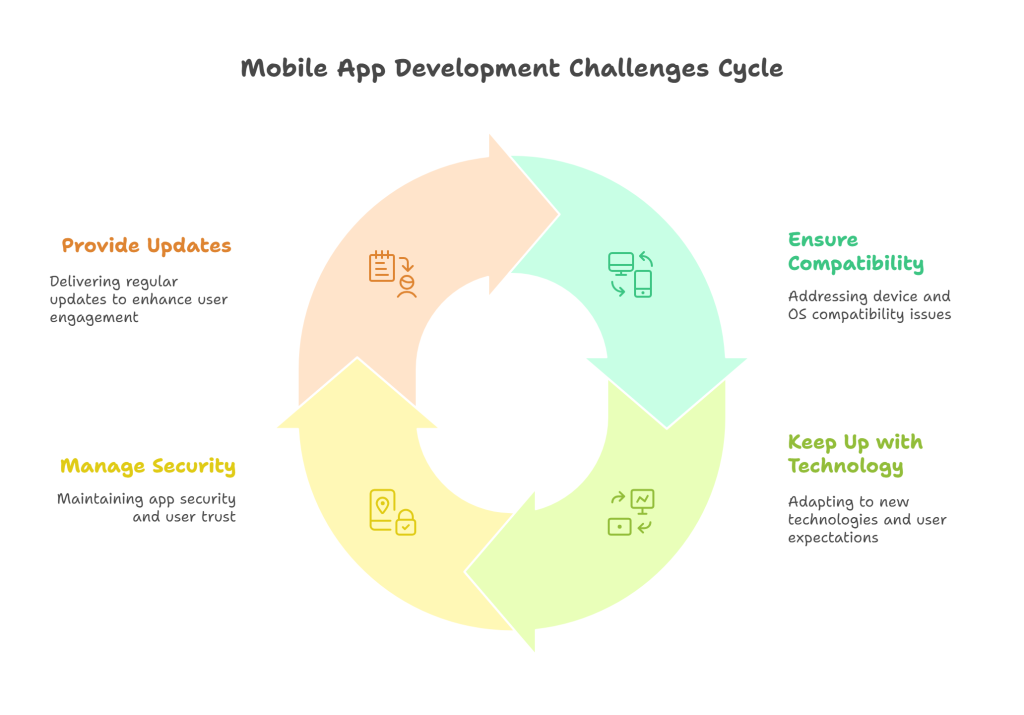The mobile app market is booming, with billions of users relying on apps for everything from communication to commerce. This vibrant ecosystem offers immense opportunities for innovation and connection, yet behind every groundbreaking application lies a complex journey fraught with significant hurdles.
For developers, the path to a successful app is rarely smooth, often resembling a gauntlet of technical, design, and market-related challenges.

This article will delve into the top 5 challenges faced by mobile app developers, shedding light on these pervasive issues and offering insights into how they can be effectively navigated for greater project success.
Major Challenges in Mobile App Development
Navigating the intricacies of mobile app developer email lists demands a keen understanding of the most common obstacles that can derail even the most promising projects. From fragmented ecosystems to the ever-present threat of security breaches, app developer problems are multifaceted and constantly evolving.
1. Device Fragmentation and Compatibility
One of the most persistent mobile development obstacles is the sheer diversity of devices and operating systems that developers must cater to. The mobile landscape is highly fragmented, particularly on the Android side, where countless manufacturers produce devices with varying screen sizes, resolutions, hardware specifications, and Android OS versions.
While iOS offers a more controlled ecosystem, even Apple’s consistent updates introduce new devices and necessitate regular compatibility checks.
This fragmentation directly impacts development by increasing the complexity of ensuring a consistent app performance and user experience across all devices. What looks perfect on a flagship smartphone might be glitchy or misaligned on an older tablet.
This leads to increased testing complexity, a significant drain on resources and time. For instance, testing an app on just a handful of Android devices barely scratches the surface when there are thousands of distinct device models in use globally.
Building responsive UIs that adapt gracefully to different screen dimensions and resolutions becomes paramount, but this is a substantial design and development undertaking.
To mitigate this, developers often prioritize target devices based on market share and user demographics. Leveraging cross-platform development frameworks like React Native or Flutter can help streamline codebases across iOS and Android, though even these require careful handling to account for platform-specific nuances.
2. UI/UX Design and User Retention
In a market saturated with millions of applications, an intuitive, aesthetically pleasing, and highly functional user interface (UI) coupled with an exceptional user experience (UX) is no longer a luxury – it’s a necessity. Poor UI/UX design is a leading cause of app abandonment.
Imagine downloading an app only to be confronted with a clunky onboarding process, confusing navigation, or an unappealing visual design; immediate uninstallation is a common user response. Data consistently shows high app abandonment rates when the initial user experience falls short of expectations.
To overcome this, developers must prioritize user research from the outset, understanding their target audience’s needs and pain points. Creating detailed user personas guides the design process, ensuring that the app is built with the end-user in mind.
Prototyping and iterative design are crucial, allowing for early feedback and adjustments before significant development resources are committed. A/B testing of different UI elements can reveal what resonates most effectively with users, optimizing for engagement and user retention.
The focus should always be on creating a minimalist, intuitive design that makes the app easy to learn and enjoyable to use.
3. Performance Optimization and Battery Consumption
Users expect apps to be fast, responsive, and efficient. One of the most critical app development difficulties lies in performance optimization and ensuring the app doesn’t excessively drain the device’s battery.
A slow-loading app, one that frequently freezes, or an application that constantly runs in the background consuming disproportionate power, will quickly lead to user frustration, negative reviews, and ultimately, uninstallation. App store algorithms also factor in performance, potentially impacting discoverability and ranking.
Achieving optimal performance requires meticulous attention to detail. This includes writing efficient code and employing optimized algorithms to minimize processing time. Developers must also be diligent in optimizing image and media assets, ensuring they are compressed without sacrificing quality.
Effective memory management is vital to prevent crashes and slowdowns. Furthermore, minimizing background processes and optimizing network requests can significantly reduce data usage and conserve battery life.
Thorough testing and debugging for performance bottlenecks, often using dedicated profiling tools, is an indispensable step in delivering a high-quality, performant application.
4. Security and Data Privacy
In an era of increasing cyber threats and heightened awareness of data privacy, safeguarding user data and the app itself from malicious attacks, breaches, and unauthorized access is paramount.
App security is not just a technical challenge but a critical trust-building exercise. Failure to protect sensitive user information can lead to severe consequences, including loss of user trust, significant financial penalties (e.g., under GDPR or CCPA regulations), and irreversible reputational damage.
Developers must adopt secure coding practices from the very beginning of a project. This includes rigorous input validation to prevent injection attacks and ensuring secure API calls. Data encryption, both at rest (when stored on the device or server) and in transit (during transmission), is non-negotiable.
Regular security audits and penetration testing by ethical hackers can identify vulnerabilities before they are exploited by malicious actors. Implementing strong authentication mechanisms and adhering strictly to relevant data privacy regulations are essential for building a resilient and trustworthy application.
5. App Store Policies, Discoverability, and Monetization
Developing a fantastic app is only half the battle; getting it into users’ hands and making it financially viable presents a distinct set of top app challenges. Navigating the often complex and ever-evolving app store submission guidelines (for both Apple’s App Store and Google Play Store) can be a source of frustration, as minor policy violations can lead to outright rejection. Check it out Apple user list.
Once approved, the challenge shifts to discoverability. With millions of apps vying for attention, standing out from the crowd is incredibly difficult.
Finally, effective monetization strategies are crucial for sustaining development and growth. Whether through freemium models, subscriptions, in-app purchases, or advertising, choosing and implementing the right approach requires careful market analysis and user understanding.
To overcome these hurdles, developers must thoroughly understand the app store guidelines before submission. Employing effective App Store Optimization (ASO) strategies – optimizing keywords, crafting compelling descriptions, and utilizing high-quality screenshots – is vital for improving visibility. Beyond ASO, strategic marketing and promotion outside of the app stores are often necessary to build momentum and attract a substantial user base.
Final Thoughts
The journey of mobile app development is undeniably complex, marked by technical hurdles, design imperatives, and market pressures.
The top 5 challenges – device fragmentation, UI/UX design, performance optimization, security, and app store dynamics – are pervasive and demand diligent attention. However, understanding these mobile app development challenges is the first step toward conquering them.
By proactively anticipating and strategically addressing these fundamental app developer problems, developers can significantly increase their chances of success.
To truly succeed in the dynamic world of mobile app development, developers must proactively anticipate and strategically address these fundamental challenges. Begin by conducting thorough research for your next project, prioritize security from day one, and always put the user experience at the forefront of your design.


